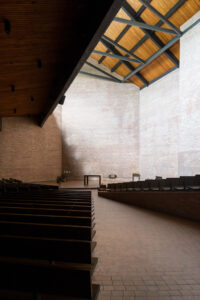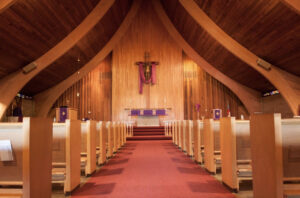At Optima®, we revel in highlighting the remarkable work of Modernist architects who have significantly influenced our urban environments. Today, we direct our focus to Edward Dart, an architect whose distinctive vision and commitment to modern design have left an enduring imprint on the architectural landscape of Chicago.
The Life of Edward Dart
Edward Dart was born in New Orleans, Louisiana, in 1922. He received his architectural education at the prestigious Yale School of Architecture, studying with luminaries including Richard Neutra, Louis Kahn, and Eero Saarinen. Dart moved to Chicago in 1949, where he joined the firm of Loebl, Schlossman & Bennett. Dart’s immense talent was quickly acknowledged, and he became a partner in the firm in 1959. His unique architectural approach merged the principles of Modernism with an attentiveness to the natural environment, resulting in the creation of striking structures that harmoniously blended with their surroundings.
Throughout his career, Dart concentrated on designing buildings that were both functional and aesthetically pleasing, seamlessly integrating them into the natural landscape. His residential designs frequently featured expansive windows, open floor plans, and the use of natural materials such as stone and wood. This design philosophy allowed Dart’s structures to be both visually stunning and environmentally sensitive.

Notable Works and Achievements
Dart died suddenly at the age of 53 in 1975. Over his short career he was enormously productive and prolific, having completed over 100 projects. He was listed in Who’s Who in America, and won 18 awards from the American Institute of Architects (AIA), including two (a Distinguished Building Award in 1971 and a National Honor Award in 1973). He was made a Fellow of the AIA, the highest honors that the organization can bestow, at the age of 44.
Some of his most significant works include: St. Procopius Abbey (1967) in Lisle, IL, a striking Modernist structure featuring an elegant combination of exposed concrete and brick, reflecting Dart’s penchant for using natural materials in his designs. Another notable work is the St. Augustine’s Episcopal Church (1958) in Gary, IN. With its soaring, angular roofline and floor-to-ceiling windows, the church is a prime example of Dart’s ability to create awe-inspiring spaces that remain harmonious with their environment. Each of these buildings reflects his unique interpretation of Modernism and his singular ability to create spaces that resonate with their surroundings.

Beyond Dart’s expertise in churches, Dart designed the “House of the Fifties” for Good Housekeeping Magazine, a model house for Popular Mechanics, and won the National Association of Homebuilders competition in 1951. One of his largest projects, Water Tower Place in Chicago, was completed after his death, and went on to become one of Chicago’s landmark buildings and one of the most-loved and most successful mixed-use retail, business, and residential centers in America.

